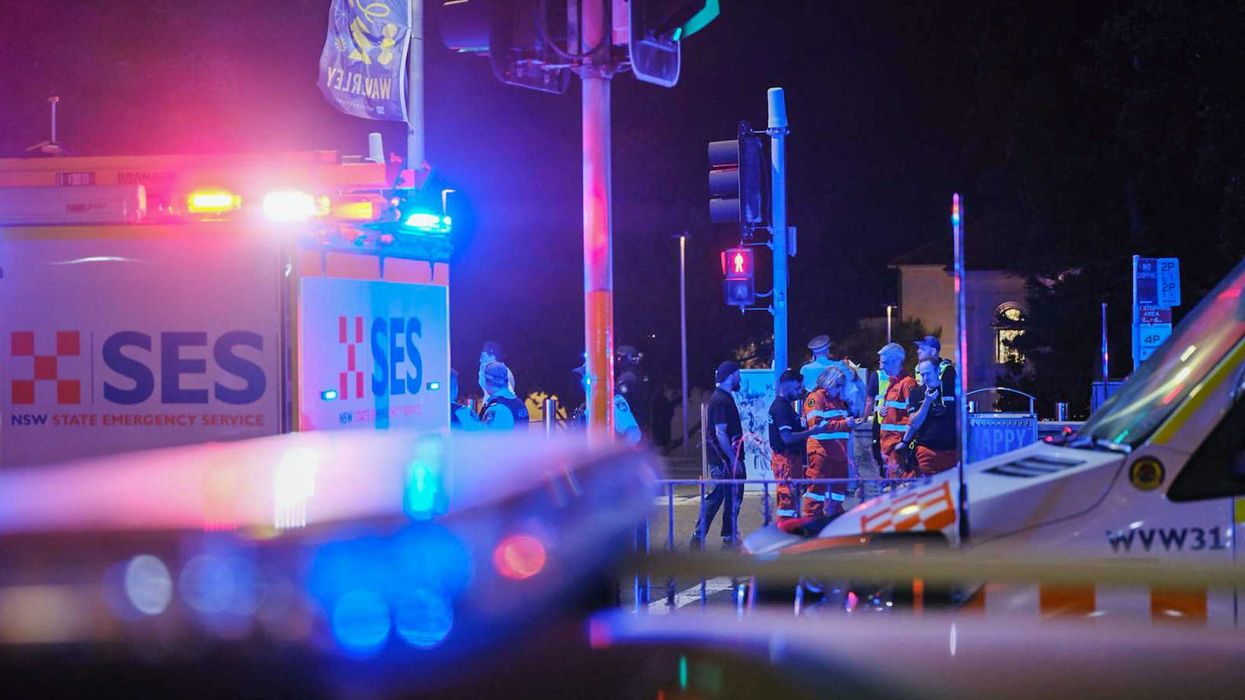
© 2025 Blaze Media LLC. All rights reserved.
"They saw the image on the cloth as the living double of Jesus."
 Art historian Thomas de Wesselow believes the Shroud of Turin is authentic and that it touched the body of Christ. He also believes the Shroud's "astonishing" and "unsettling" images “fooled the Apostles” and that the Resurrection was really an "optical illusion.”
Art historian Thomas de Wesselow believes the Shroud of Turin is authentic and that it touched the body of Christ. He also believes the Shroud's "astonishing" and "unsettling" images “fooled the Apostles” and that the Resurrection was really an "optical illusion.”
“They saw the image on the cloth as the living double of Jesus,” the art historian told The Daily Telegraph. “Back then, images had a psychological presence; they were seen as part of a separate plane of existence, as having a life of their own.”
“If you think yourself into the whole experience of the apostles. Going into the tomb three days after the crucifixion, in the half-light, and seeing that image emerging from the burial cloth,” he said.
De Wesselow, who calls himself a “shroudie,” has spent the last eight years researching the Shroud for his new book “The Sign: The Shroud of Turin and the Secret of the Resurrection.”
 The Cambridge academic's book claims to solve the mystery of the Shroud. But De Wesselow is not alone; several others have come before him. You may recall some of the Shroud's most recent history (via The Daily Mail):
The Cambridge academic's book claims to solve the mystery of the Shroud. But De Wesselow is not alone; several others have come before him. You may recall some of the Shroud's most recent history (via The Daily Mail):
In 1988 the Holy See, which controls access to the artifact, allowed radiocarbon dating on portions of a swatch taken from a corner of the shroud.Independent tests in 1988 at the University of Oxford, the University of Arizona, and the Swiss Federal Institute of Technology concluded that the shroud material dated to 1260–1390 AD, with 95 per cent confidence.
These dates corresponded with the first appearance of the shroud in church history.
The tests were criticized, with some saying the sample taken for analysis may have been a part repaired in the medieval period. But others insist this answers the mystery of the Shrouds origins and authenticity.
But in December 2011, physicist Giulio Fanti published a critical compendium of the major hypotheses regarding the formation of the body image on the shroud.
He stated that 'none of them can completely explain the mysterious image'.

And the debate continues.
The historian believes the Shroud was stolen by French knights and the Crusaders during the sack of Constantinople in 1204.
“De Wesselow's new book claims to prove the botched sampling of the cloth and the last-minute abandonment of agreed procedures mean that the carbon dating test was seriously flawed,” the Mail reports.
“He is convinced modern analysis proves the Shroud is genuine; that pollens lifted from cloth fibres indicate that it was once in Israel; a seam used in the weave of the linen is identical to one found only on a first-century cloth from Judea; the wound-marks are composed of real blood; and an alternative, peer-reviewed test of the age of the linen found that it was over 1300 years old,” the Mail reports.
De Wesselow also argues that the Shroud’s negative image explains why, according to the Gospels, Christ’s disciples were unable to recognize Him at first.
Want to leave a tip?
We answer to you. Help keep our content free of advertisers and big tech censorship by leaving a tip today.
Want to join the conversation?
Already a subscriber?
more stories
Sign up for the Blaze newsletter
By signing up, you agree to our Privacy Policy and Terms of Use, and agree to receive content that may sometimes include advertisements. You may opt out at any time.
Related Content
© 2025 Blaze Media LLC. All rights reserved.
Get the stories that matter most delivered directly to your inbox.
By signing up, you agree to our Privacy Policy and Terms of Use, and agree to receive content that may sometimes include advertisements. You may opt out at any time.






